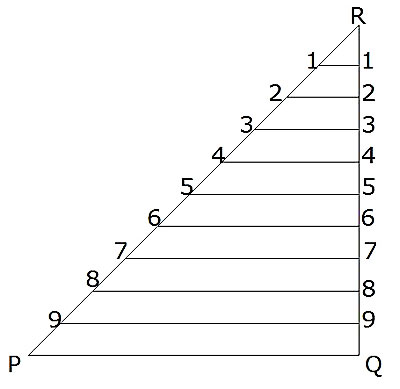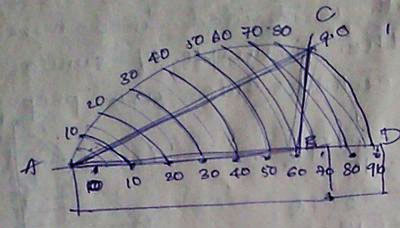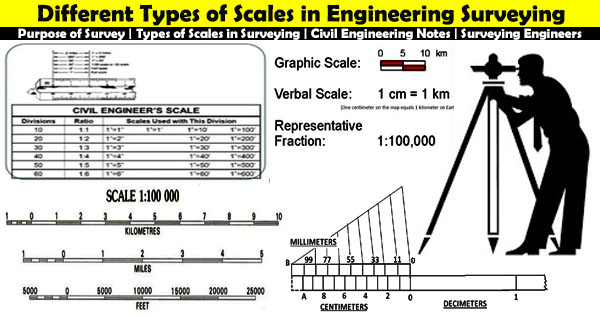Different Types of Scales In Engineering Surveying

This construction article provides detailed discussions on various types of scales which mostly recognized in Surveying.
The scales are categorized as follow:
1.Plain Scale
2.Diagonal Scale
3.Vernier Scale
4.Scale of chords
Plain Scale
With Plain Scale, it becomes easier to measure two dimensions only. As for instance, measurements like units and lengths, metres and decimetres etc.
There are six dissimilar plain scales in metric which are ideal for engineers, Architects and Surveyors.

Diagonal Scale
By applying diagonal scale, it becomes simpler to calculate three dimensions like metres, decimetres and centimetres, units , tens and hundreds; yards, feet and inches etc.
A short length is segregated into number of parts by applying the standard of similar triangle under which sides are symmetrical.
1-1 denotes 1/10 PQ
2-2 denotes 2/10 PQ
9-9 denotes 9/10 PQ

Vernier Scale
This device is mostly applied for estimating the fractional part of one of the minimal divisions concerning a graduated scale.
It generally comprises of a small auxiliary scale which slides alongside of the main scale.
Minimum count of the vernier = the variance among smallest division on the main division and smallest division on the vernier scale.
Scale of Chords
Scale of chords is very useful to calculate an angle and is pointed on either on rectangular protractor or an ordinary box wood scale.

To read the complete article, click on the following link
civilprojectsonline.com

